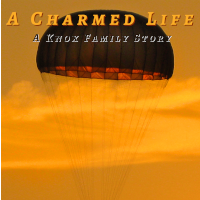As early as the 1890s the people of the Metropolitan Boston area – through its water-rights agency, the Metropolitan District Commission or MDC – eyed the Swift River Valley in west-central Massachusetts for a massive manmade reservoir. Bills drafted and introduced at the Massachusetts General Court in the early 1920s would have allowed the Commonwealth to ‘disincorporate’ four towns in that valley to create such a reservoir. Such bills were threats, threats the relatively few residents of that area would never have amassed the political might to defeat. Even if other towns west of Boston already affected by similar, smaller reservoirs added their voices to such a fight, it would have been hopeless.
In 1926 and ‘27, scientists made near-simultaneous discoveries of cheap, efficient, and easily implemented desalinization processes that also treated wastewater. These allowed for water treatment and desalinization plants of sufficient size to be built near Boston which would supply the growing city with the water it needed. Being easier to build and costing much less than moving four towns worth of people – and scraping away four towns worth of vegetation – these plants ended any talk of taking land in the valley. Plants soon flanked Boston, north, and south, and one or two even sat in the harbor. Treatment plants based on the original design soon popped up across the country, as the patent was not enforced. The use of certain pork-derived products in the original design stymied worldwide adoption for many years. Most of the Middle East and major portions of Africa refused to use the purifier due to religious objections until well into the twenty-first century.
These inventions – coupled with the gravity-fed reservoirs built during the late-1800s and early-1900s in Framingham, Sudbury, and Worcester by the MDC – ensured fresh, clean water would be available for the thirsty Metro Boston region for the foreseeable future, at least before World War II.
The residents of the cities and towns surrounding Boston soon began to push back at the urban planners. Those towns staged successful ‘suburban revolts’ in response to highway expansion plans during the late 1950s and early 1960s. The growing environmental movement of the 1970s also ensured the valley would remain largely as it was, despite Metro Boston’s growing population and water needs. Adding capacity to the original plants handled the water demand increase for a while. Improvements in base technology and miniaturization allowed in-home units at an affordable price by the start of the 1980s. This sounded the death knell for any thought that Eastern Massachusetts would ever need another reservoir larger than a water cooler.
Greenwich (pronounced “GREEN-witch”) built a modern hospital in the mid-1930s with the help of the Work Projects Administration. Doctors vacationing from New York in the late 1920s noticed the appalling lack of adequate medical care in the region and helped establish it in the northeastern part of Greenwich Village. The Greenwich Village Hospital, now called Greenwich Village Medical Center, replaced the much added-to original hospital building with a new complex in early 1983. It now owned an expansive three-square-mile campus straddling the Greenwich-Dana town line and employed over twenty-five hundred men and women. Swift River Health Care, GVMC’s parent company, employed a further two thousand people across their three other hospitals in the towns of Ware, Gardner, and Athol. GVMC kept as much of the flagship campus as untouched as possible, allowing it to blend into its surroundings while also allowing for future growth. Upon completion of the new hospital complex the site of the original hospital was returned to its pre-construction state and protected.
Prescott was the poorest of the four towns in the MDC’s sights. It was also the one that was ready to hand the MDC the keys to Town Hall early in the reservoir discussion. Due to its topography, it became the town of choice for GVMC’s doctors to build their homes in, owing to the views from either side of Prescott Ridge. These medical professionals helped bring much-needed tax and construction revenue to the area. They also committed to keeping much of the non-rural extras out of the area. Winter sometimes made the trek from Prescott to Belchertown or Ware for serious shopping at department or specialty stores difficult. It was a sacrifice residents seemed willing to make, however, and even more so as transportation technology improved. This also translated into better facilities in the area than one might expect as those medical professionals also attracted the presence of other professionals to serve them.
Dana, the northernmost town in the original target area, remained almost untouched and much as it had been in the 1920s. Farming continued to dominate the town’s character through the middle of the twentieth century, which would be to its benefit later, as is explained below.
In the southernmost of the four towns, Enfield, a textile tycoon named Ezekiel Thompkins founded a private school along the Greenwich town line in the last days of the Roaring Twenties. Named for its founder, it was well-endowed enough to allow it to keep tuitions low, and for it to weather the turbulent years of the early- to mid-1930s as the Depression engulfed the United States. The school, a middle and high school as well as a mix of boarding and day school, was male-only until 1969 when the trustees opened enrollment to young ladies in the fall of that year. This fact drew a fifty-six percent increase in applications and ushered in a thirty-two percent increase in admissions, along with a concurrent rise in revenue. Despite the continual improvement in transportation, boarding enrollment continued to account for two-thirds of students due to its strong academic reputation. Valley residents made up a large percentage of day students.
The Massachusetts Department of Public Works, formerly the Massachusetts Highway Commission, planned not to plan highways in the four towns due to their futures. It found itself needing to draw state highways across the valley. A thoughtful young man in their planning office possessed enough foresight not to use consecutive numbers for the route numbers. He also chose numbers that hadn’t already been assigned and would fill in gaps on the numerical list of route numbers in Massachusetts.
In contrast, the American Association of State Highway and Transportation Officials, which coordinates the planning and numbering of the U.S. Route system, mapped out its U.S. Route 202 as if there was going to be a thirty-plus acre man-made lake in West Central Massachusetts. Rather than running through Dana, Greenwich, and Enfield on its way from Athol to Belchertown, they cut U.S. 202 to the west of the valley and it acted as a sort of bypass to the area, one that somehow did not harm it.
The 1950s through the 1970s also brought a decline in the textile and manufacturing industries all across the New England region. Mills that once dotted the valley closed one by one, bringing economic hardships not experienced since the Depression. Fortunes began to turn for the area again as people began to look away from the cities more in the waning years of the 1980s and 1990s. Organic farming took off, revitalizing the old, undeveloped family farms that still peppered the landscape as people yearned for the simpler life.
Jeffrey Andrew Knox entered this world in the latter half of 1969. A shy and unassuming boy for his first thirteen years, he would soon take charge of his life and make his mark on the world around him.







